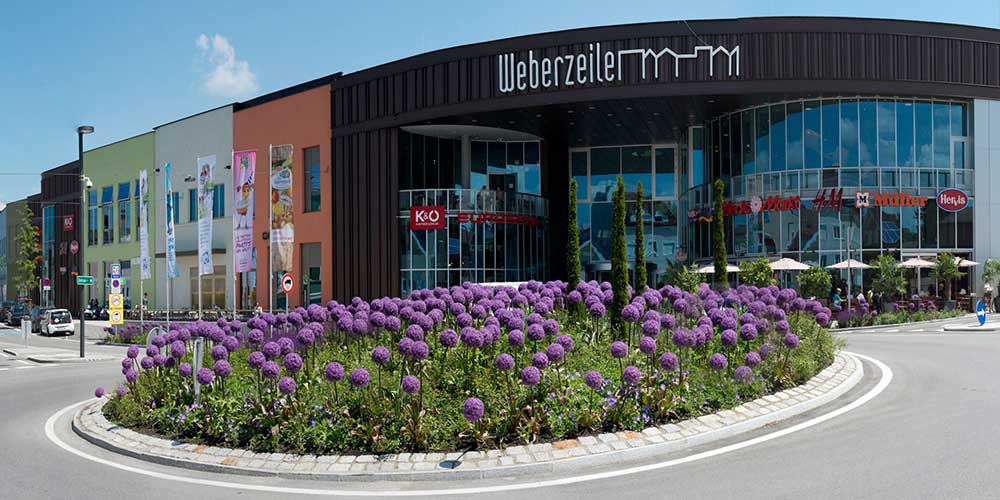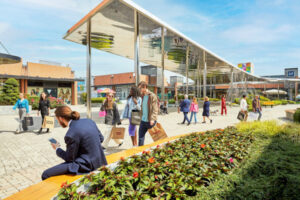We at ACROSS have spoken with numerous international professionals and industry insiders over the past few weeks; we have talked about their experiences, their fears, and their concerns, as well as the potential and the opportunities they see for the future of the placemaking industry. Covid-19 has significantly changed the ways in which we live and work. However, despite the “global disruption”, a wealth of innovation and new trends have emerged. One thing is clear: The pandemic has greatly accelerated structural changes in society and commerce that were already on the way.
Here is an overview of 10 of the most significant and influential trends.
1. Shop Local
A resurgence of the “Shop Local Movement” emerged in 2020. Local retailers skyrocketed in popularity among many consumers. Consumers have become much more conscious of why and what they buy, as well as who they support in the process. One might also say that the pandemic has intensified the desire for a more self-sufficient and regionally functioning economy. People are expected to continue to work more from home in the post-Covid world; such a development will likely lead to the strengthening of “mixed-use community hubs” that are harmoniously integrated into people’s lives.

2. Covid-19 as a Technology Booster
This major trend encompasses a variety of “sub-trends”, such as Artificial Intelligence (AI), Robotics, Internet of Things (IoT), Extended Reality (XR), Virtual Reality (VR), and Augmented Reality (AR). According to a global survey conducted by Nielsen, just prior to the onset of Covid-19, consumers cited AR and VR as the top technologies they were interested in using more frequently in their daily lives in the future. While none of these technologies are new to retail, they went from being “nice to have” to being an essential part of retail in 2020 – especially where the personalization of offers is concerned. Covid-19 has served as a technology booster, so to speak. As a result, we can expect flagship stores, in particular, to function more as “discovery zones” in the future, creating emotional connections with customers rather than simply selling products directly on site. Major brands have already begun to invest heavily in such “hybrid spaces”.

3. Omnichannel
The separation of in-store and online purchasing is a thing of the past. From now on, retail will be an omnichannel business. One in three consumers already uses multiple channels to make their purchasing decisions. As summarized in Deloitte’s “The Future of the Mall” report, as technology advances, top retailers will do everything they can to provide customers with a “seamless omnichannel experience”. A customer journey that perfectly combines the online world with that of a service-oriented store (of the right and requisite size) will be the result.
4. Reassessment of the Role of the Physical Store
Even before the outbreak of Covid-19, many retailers had already begun to reduce their “area footprints”, and numerous studies and forecasts have predicted that retailers’ store footprints will continue to decline by 20 to 40 percent. Omnichannel and an increased use of technology are the driving factors behind this trend.
5. Value Awareness
To some extent, the pandemic has hit the reset button on societal values. A greater degree of consumer awareness now exists. More and more consumers have become increasingly conscious of their purchasing decisions and have become more selective when it comes to shopping at retailers that reflect their social, cultural, environmental, and political ideals. The demand for brands to build an “authentic and coherent world of values” and to communicate such values to their target groups is certain to increase.

6. Touch-free Shopping
Touch-free – ideally without payment, without contact, and without a door. Covid-19 has accelerated the delivery of technologies and services that enable customers to shop with as minimal contact as possible. Retailers are expected to deploy more touch-free technologies, such as sensors, artificial intelligence, facial recognition, and voice activation in the future. The reduction of touch-based opportunities and the elimination of physical in-store interactions are the goals.
7. Personalization
According to Forbes, consumers spend 48 percent more when their shopping experiences are personalized. Well-heeled shoppers have always been accustomed to receiving a great deal of personal attention when shopping at luxury stores. Their shopping experiences have always been “personalized”. However, technology has steered us into an era of mass personalization. There are a number of key buzzwords that can be used in this context: recommendation engines, curated shopping processes, concierge services, and chat functions with sales representatives. Basically, the “online inspiration” phase has become a very important part of the customer journey, which is all about finding one’s own inspiration as well as inspiring others on social media.
8. Pop-ups
As far as business models go, pop-ups are perfect for defying the Covid-19-related vicissitudes within the retail industry. They are highly adaptable, fun, and they support both independent creatives as well as major brands. The consumer need for something that is “always new, always different” is fully met via pop-ups. In addition, the overall staging that links the physical store to the online world (compatibility with Instagram) can be ideally executed by means of pop-ups. As a result, pop-ups will continue to play an increasingly important role in the future.
9. Outdoor
Covid-19 has brought about a new safety consciousness: Being outdoors is safer than being indoors. Therefore, the question regarding how attractive outdoor areas can be created and how they can best be integrated into an overall concept will be one of the most important questions to be answered in the future. In addition to the new Covid-19-driven safety issue, consumers seem to have increasingly rediscovered their need to return to nature.
10. Mixed-use
While this trend is by no means new either, the pandemic has likely propelled numerous projects forward by at least a few years. Both economic considerations (use of multiple “mainstays”) and significant changes with respect to social interaction will continue to fuel this trend.






